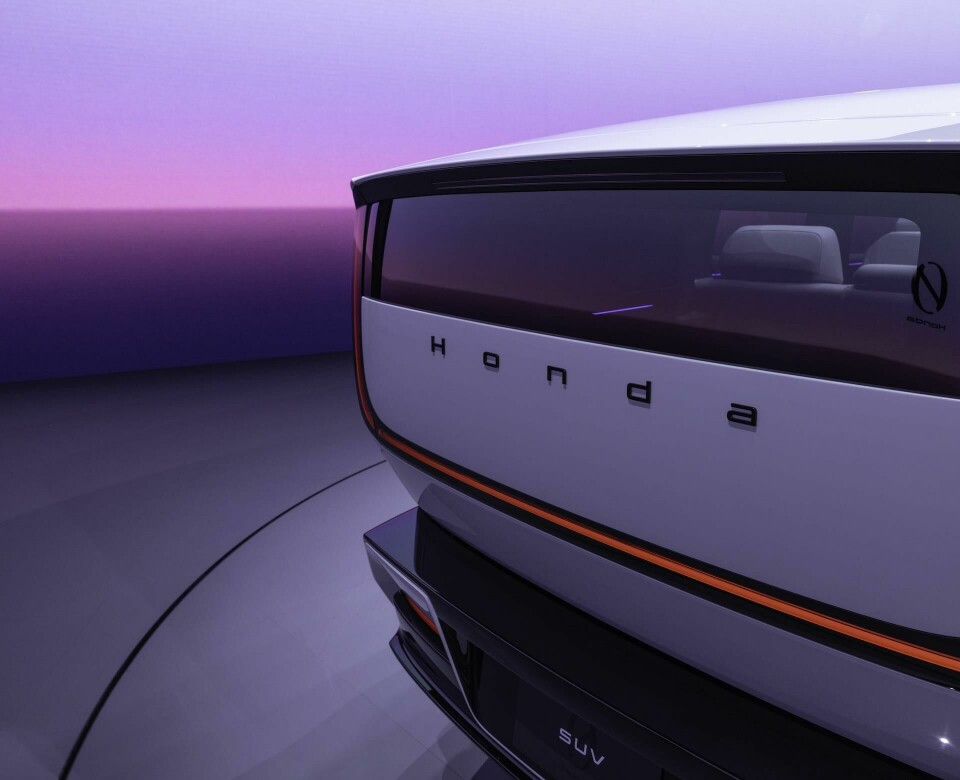
Honda debuts 0 Series Saloon and SUV prototypes at CES
New electric series brings a fresh philosophy and design language – but also channels Honda’s heritage
At CES 2025 in Las Vegas, Honda debuted the first two models in the forthcoming ‘0’ series of battery electric vehicles, the 0 SUV, and the 0 Saloon. Scheduled to enter production in the US late 2026, the vehicles will be built on their own bespoke EV platform.
The 0 Series (0, as in zero) will represent a new direction for Honda, which starts with a new philosophy for the new line of vehicles. This philosophy, called Thin, Light, and Wise, expresses itself in the design of its new EV platform (thinner and lighter batteries), bodies (thinner and lighter) and its new OS and advanced AI-infused electronic infrastructure – wiser than just ‘smart’ electronics.
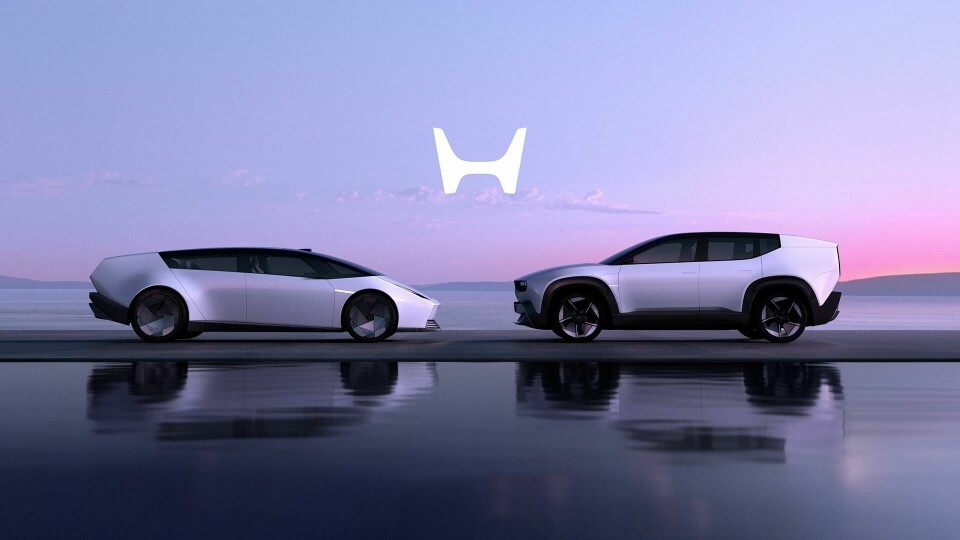
The five core values of this philosophy are as follows:
1) Artistic design that evokes resonance.
2) Autonomous driving/ADAS that ensures safety and peace of mind.
3) A “space” for people made possible by the network of interconnected technologies, dubbed the ’Internet of Things’ (IoT) on an industry level
4) The joy of driving with the feeling of oneness with the vehicle.
5) Outstanding electricity efficiency and performance
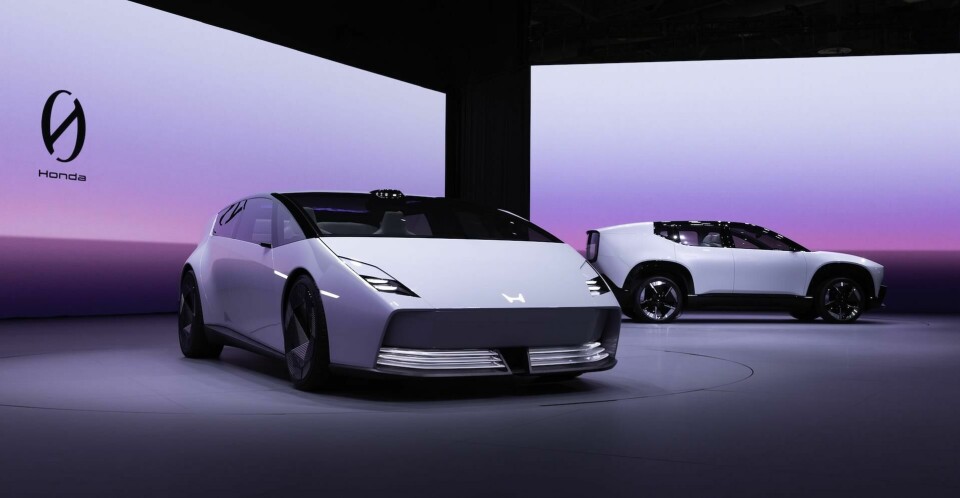
The flagship of the 0 series will be the 0 Saloon, introduced as a concept at last year’s CES.
The 2025 version is a bit more refined, more sedan-like, and with its bright white colourway, more approachable, as opposed to its Darth Vader-like black predecessor. One imagines it going head-to-head with a Tesla Model S or Lucid Air.
As we noted last year, the Saloon is about form – there’s very little in the way of character lines or brightwork to animate the overall mass. That’s just fine however, as the mass is sufficiently dynamic to hold its own. It doesn’t need enhancements. With a one-bow design and wedgey looking front the saloon looks vaguely Lamborghini-ish from certain angles, while the rear is truncated with a high tail light graphic.
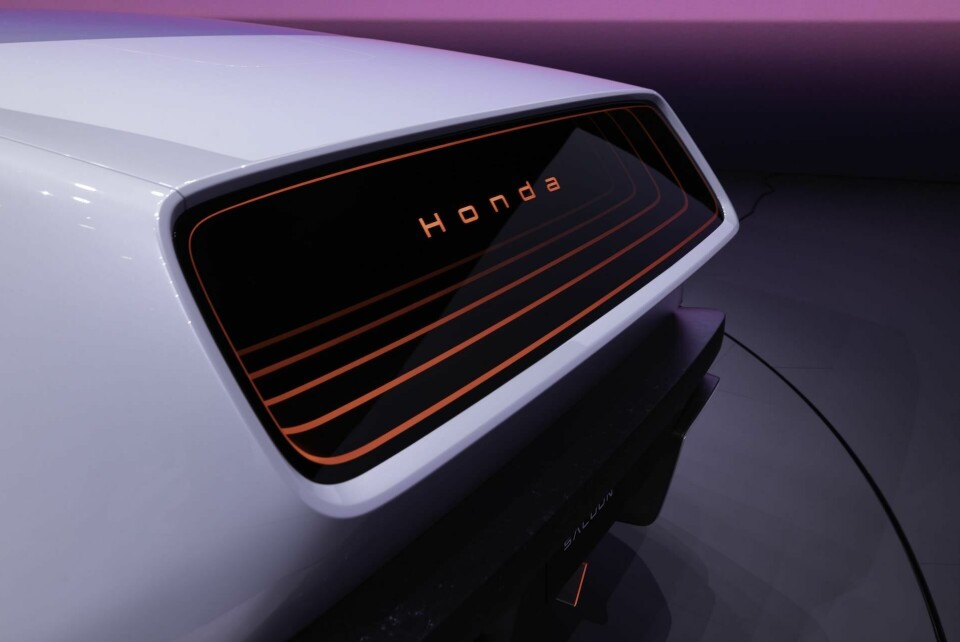
Although the 0 series is a new venture for Honda, that doesn’t mean the Saloon doesn’t evoke certain classics of the past. Besides the aforementioned Lamborghinis, the Bizzarini Manta concept certainly bears a passing resemblance, and, closer to home, the Honda Kiwami, an underrated concept car from 2003, seems like a direct ancestor.
That car, powered by Honda fuel cells and ultra-capacitors, employed the most advanced powertrain in the era just before lithium-ion batteries. Both the exterior and interior bear more than a passing resemblance to the 0 Saloon – and that’s not a bad thing. A twenty-year-old concept car that could be successfully updated to new technology and market conditions and still look cutting edge? That’s a winner, Honda.
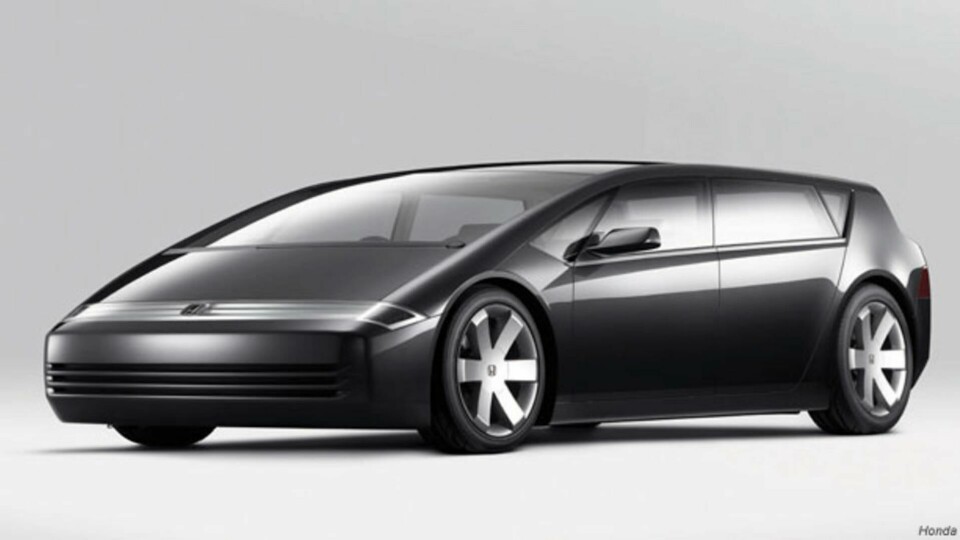
The name of the car, the 0 Saloon, may have some resonance with UK customers, who already refer to sedans as saloons. But to many Americans, a saloon evokes drinking establishments in old movies about the Wild West: cowboys, gamblers, six shooters and tinkly pianos. Not the sort of image one wants associated with a high-tech automotive concept of the future. We assume Honda is working on this.
The other vehicle revealed at CES was the 0 series SUV, a medium-size SUV that might compete with Tesla’s Model Y or the Mustang Mach-E. Again, form is the big design statement here.
Evoking the image of a robot as a metaphor for the car of the future did not go unnoticed
The overall typology is entirely recognisable – a two box utility vehicle – but strong massing and form gives the 0 SUV its distinctive character.
Both the Saloon and SUV have blacked out wheel arches, making the wheels seem larger, and in the case of the SUV, as if the vehicle is standing on tippy-toe. Both also have large quarter panels behind the rear seat, large potential blind spots, except that on-board AI systems (see below) will keep drivers informed about surrounding traffic conditions.
Both interiors are predictably plush, with panoramic roof glazing. Unlike last year’s pillar-to-pillar touchscreen with retractable steering yoke, this year’s interiors were a bit more realistic with multiple screens, including a couple that appear to act as rearview mirrors.
The yoke doesn’t seem retractable, though with Level 3 autonomy (of a possible five, based on the SAE scale), it is not entirely out of the question. The seats are wide and plush on both models as comfort, not jamming the kids into the passenger compartment, is the primary goal here.
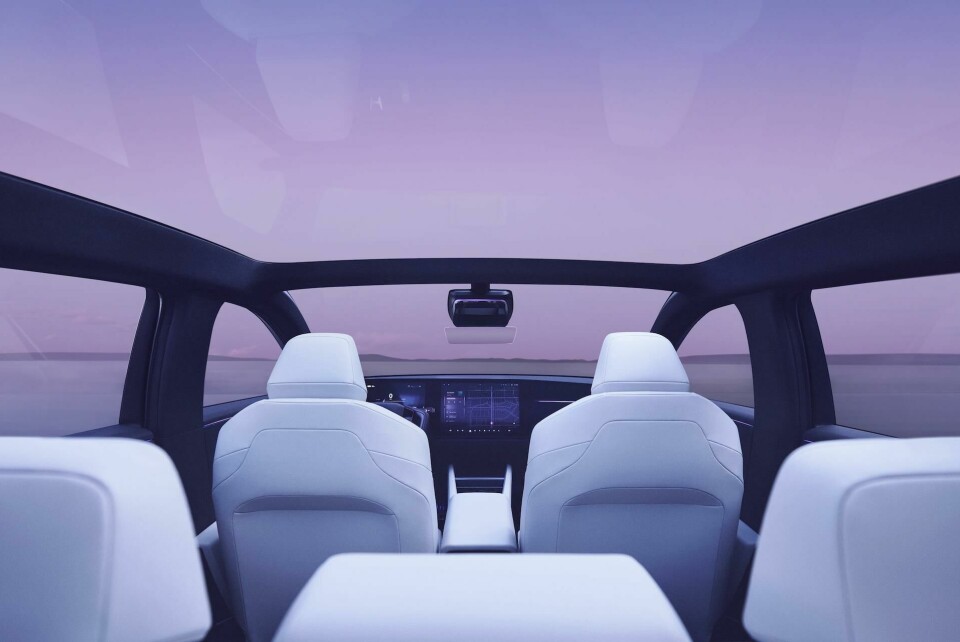
This being CES, some advanced electronic wizardry was inevitable, and Honda did not disappoint. Both of these vehicles will be equipped with its bespoke ASIMO Operating System,
Developed in house, ASIMO has a long heritage at Honda which first built the system in the form of a robot (named ASIMO, of course) back in 2000. The technology that brought so much animation and situational awareness to the little humanoid robot back then has evolved into an advanced software platform that controls advanced driver assistancesystems (ADAS), and allows over-the-air updates for its core software, as well as driver preferences to driving enhancements and digital UX. Evoking the image and history of a robot as a metaphor for the car of the future did not go unnoticed by the assembled press and tech luminaries.
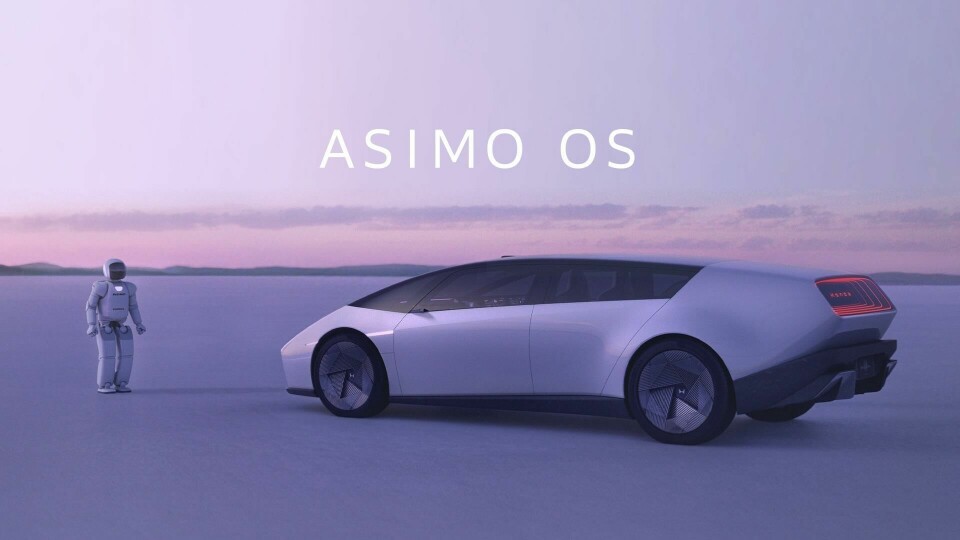
As mentioned, Honda will be integrating its SENSING Elite technology that will allow for Level 3 autonomy – also described as ‘conditional automation’ – where the car can drive itself under specific circumstances. Already available on limited models in Japan, the expansion of the program into the 0 series will allow some limited “eyes-off” autonomy, where the driver could watch a movie or remotely attend a meeting. Napping is not allowed and drivers must be able to take over at short notice.
Echoing last year’s 0 series introductions, Honda continues to bring forth a bold vision of the future, one that is at odds with its traditional conservative styling, at least in its US products. Could this be Honda’s “Jaguar Moment”, when everything changes? That might be a bit of an overstatement, but why not? The automotive world is changing so rapidly – Honda itself may even look different in a few years – and so bold solutions may be the only way forward. The 0 series hints at such a future.




















